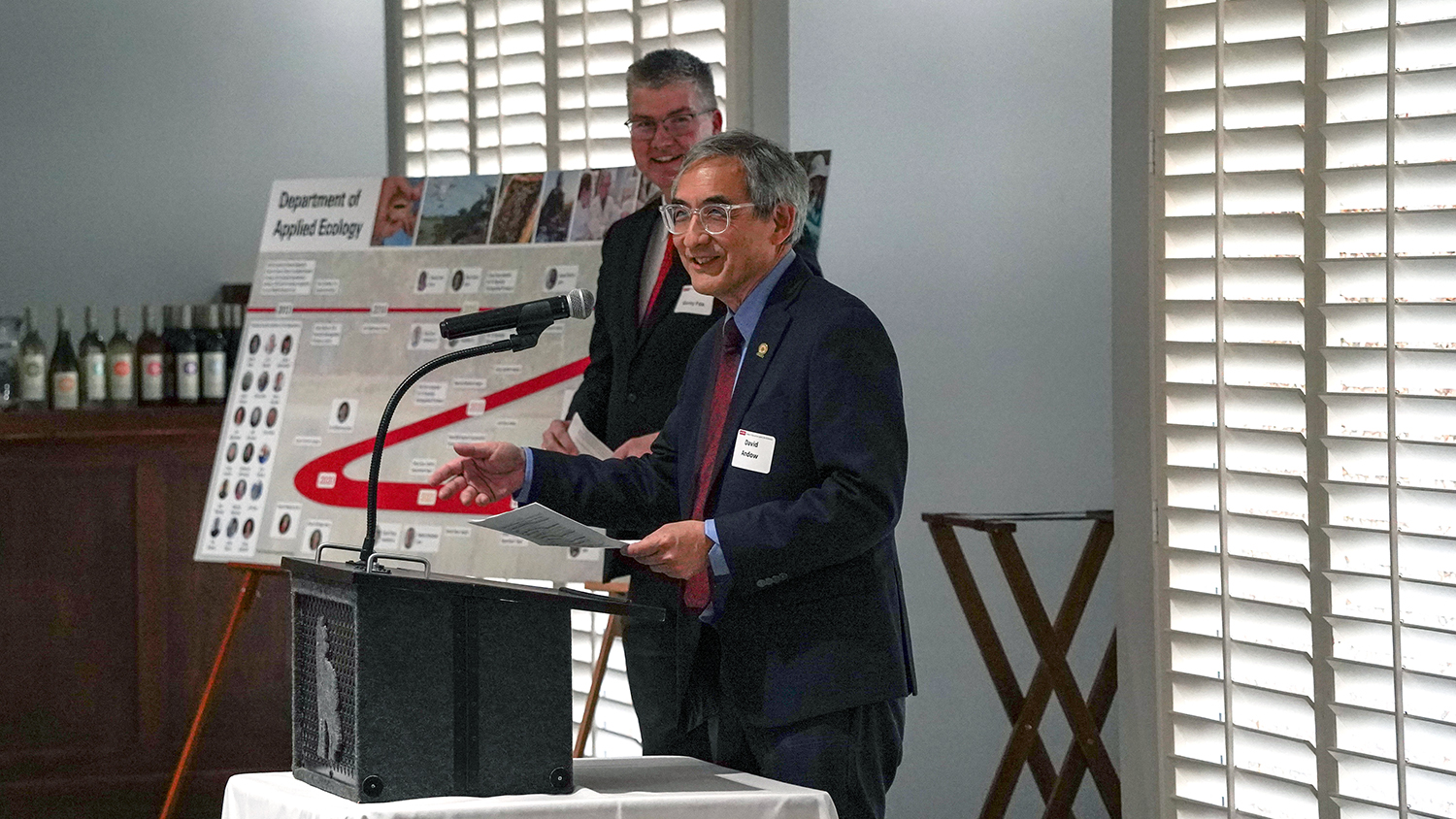Alumnus Raymond Schnell maps cacao genome, leads international research
The next time you tear into a candy bar or sink your teeth into a brownie, consider this: Most of the world’s chocolate comes from cacao produced on small family farms in developing countries.
And one man, plant geneticist and College of Agriculture and Life Sciences grad Raymond Schnell, is helping lead an international effort to make better cacao, which in turn not only bolsters an industry but also helps improve the livelihood of millions of small farmers.
Schnell, who earned master’s and doctoral degrees from the Department of Crop Science (in 1979 and 1984, respectively), is largely responsible for creating a cacao research program in the United States that has had significant global impact.
And he recently collaborated with a team of scientists to sequence the cacao genome, which unearths vast potential to better understand and improve this crop.
“With the help of a few grants, I started a very modest cacao project in Miami in 1990,” Schnell said. But then Hurricane Andrew swept through the area in 1992, destroying Schnell’s quarantine house and plants. In 1993, the United States Department of Agriculture (USDA) abolished his program.
But just a few years later, the USDA contacted him again, “since I was pretty much the only person working on cacao in the United States,” to re-start the project, with a focus on improving disease resistance in Central and South America.
At that time, candy maker Mars Inc. had been purchasing most of its cacao beans from Brazil. But a disease called witches’ broom surfaced in the country and quickly decimated the cacao industry there. So Mars turned to Schnell in 2000, launching what would become one the world’s largest cacao research programs, in partnership with the USDA Agricultural Research Service.
Then the U.S. Agency for International Development approached him in 2001 to expand the cacao program into West Africa.
Today, the international breeding project features collaboration with national agricultural research organizations in Brazil, Costa Rica, Ecuador, Nigeria, Ghana, Cameroon, Cote d’Ivoire, Malaysia and Papua New Guinea, as well as in Hawaii and Puerto Rico in the United States.
“We’ve been working with breeders in all areas to improve efficiencies and make the crop as profitable as possible for these farmers,” Schnell said in an article published by the Fairchild Tropical Botanic Garden magazine. “The program combines traditional breeding and new biotechnology-based techniques towards the long-term goal of genetically improving this important tropical tree crop.”
One of the first goals of the new program was to “clean up the germplasm collections, which were a mess,” Schnell said. Then he and his team developed genetic recombination maps and started using markers as selection tools.
“But the research wasn’t moving fast enough,” Schnell said.
At that time, second-generation genome sequencing was coming online, and, according to Schnell, it was affordable, available and the quickest way to generate a slew of new markers.
By September 2010, a team of scientists, including Schnell, publicly released a preliminary sequence of the cacao genome, which contains all of the tree’s hereditary information. At press time, the genome map was about 92 percent complete.
“This marked a milestone in the scientific understanding of this crop,” Schnell said, using a street map analogy to describe the significance and quantity of the new data. “It’s like going from having street signs in a square mile area to having addresses for each house,” he said.
The genome sequence “helps us identify genes involved with the expression of important traits, like disease resistance,” Schnell said. “It also enables us to pinpoint the location of specific genes and creates opportunities to look for novel genes.”
Further, he said, being able to select genes early in the cultivar development process will save significant amounts of time and money.
Discoveries being unlocked by the genome sequence can be applied, through traditional breeding, to genetically improve a crop “that provides environmentally sustainable income for millions of small farmers in developing countries,” Schnell said.
The genome sequence data is public information, available on this website: http://www.cacaogenomedb.org.
Schnell credits much of the success of the program to the productive collaboration between industry, government, scientific institutions and producers. And with a nod to his roots, he said that his experience in the Department of Crop Science also has played a role in his success.
—Suzanne Stanard


